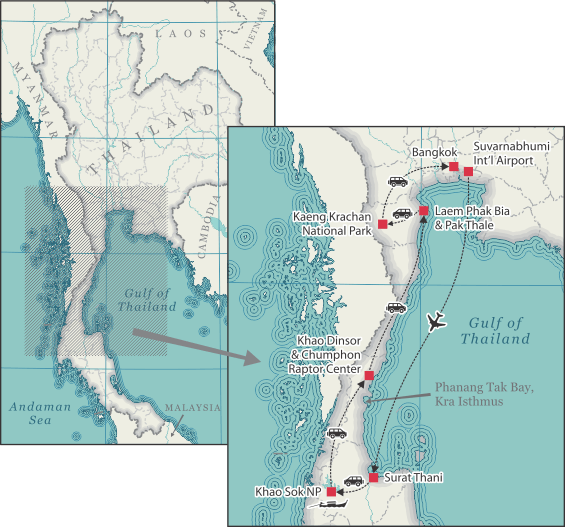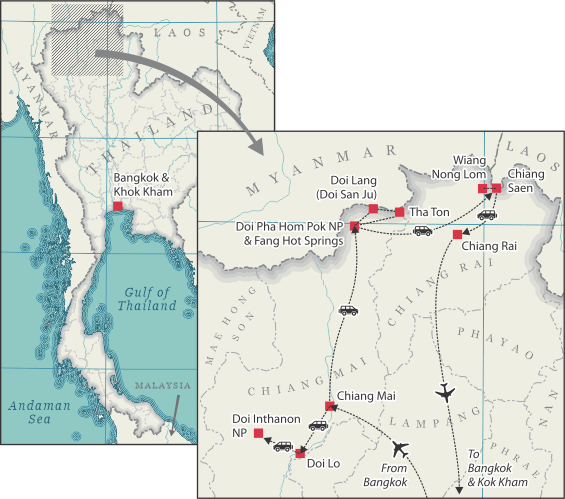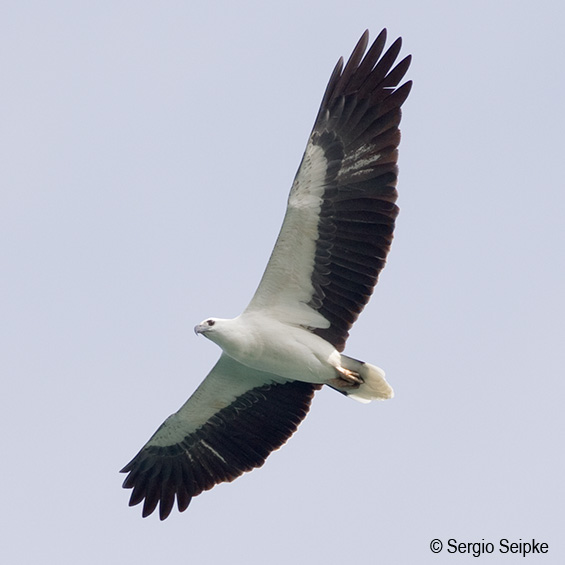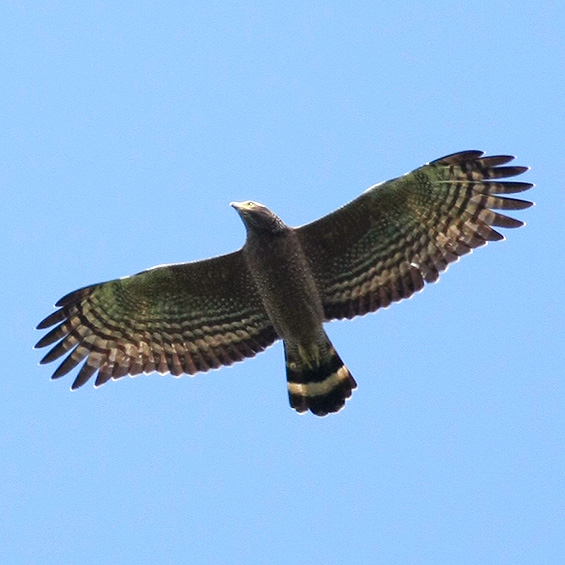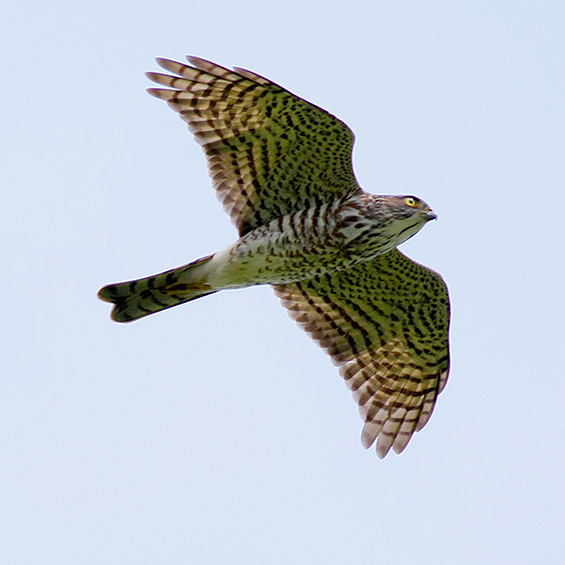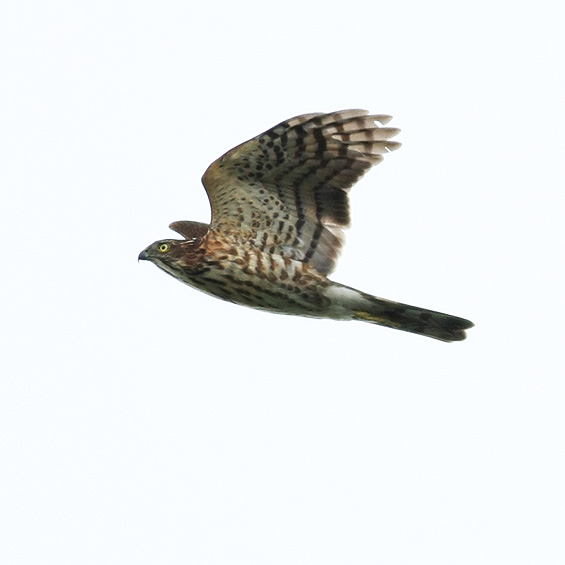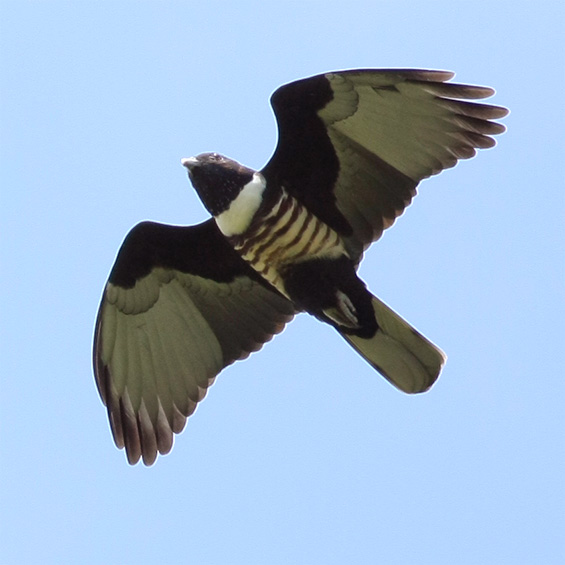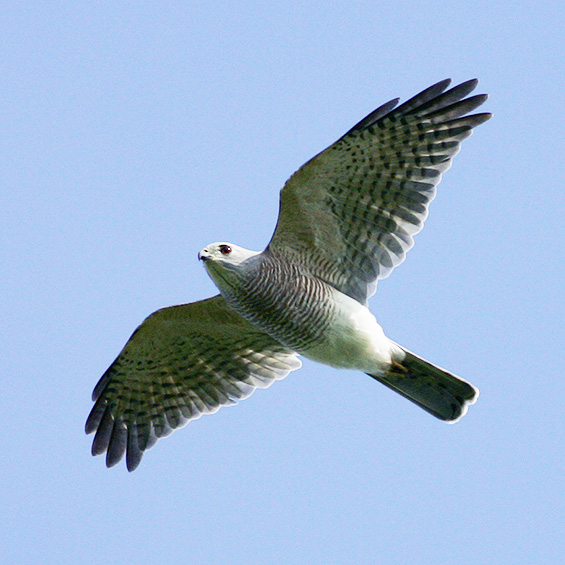Thailand Raptor Tour
Thailand Raptor Tour
And Northern Thailand Extension!
4 PARTICIPANTS NEEDED TO CONFIRM DEPARTURE
Share this!
Wieder eine für Greifvogelfans in gewohnter Weise perfekt geplante Reise von Raptours, mit bester fachkundiger Führung, Unterkunft und Verpflegung.„
Dr. Dieter G. Haas, Germany. 2013 Edition
«Un viaje con 32 especies de rapaces avistadas resulta sorprendente. Un guía experto en el tema que contrata guías locales para no perder detalle de otras especies no es habitual. Resultado, una excursión ornitológica para guardar en forma indeleble en el espíritu.»
Norberto Oste, Argentina. 2015 Edition
The best raptor migration in Southeast Asia!
Every autumn hundreds of thousands of raptors in Indochina follow four main migration routes originating in remote Siberia, northern China and Mongolia, across the region through Thailand and Malaysia, into Indonesia, the Philippines, to Papua New Guinea, and even northern Australia.

© S. Seipke
One of these routes, the East Asia Continental Flyway, lies along the Kra Isthmus, the land bridge connecting the Thai‑Malay Peninsula with the continent. Located on the coast of the South China Sea, Khao Dinsor—dubbed the Hawk Mountain of Asia—is witness to a fantastic raptor migration.
Over a quarter million diurnal birds of prey of some 25 species fly past this point every autumn, with the jewel at Khao Dinsor being the massive flight of over 150,000 Black Bazas, for which our tour is timed! The raptor flight here also includes up to 125,000 Chinese Sparrowhawks, over 40,000 Oriental Honey Buzzards, 15,000 Gray‑faced Buzzards, more than 10,000 Japanese Sparrowhawks, and thousands of Shikras.
Bird the oldest rainforest on Earth
At 160 million years-old lowland tropical forests at the wondrous Khao Sok National Park, with a bird list of 365 species, are the oldest in the world and provide a remarkable scenic backdrop for resident raptors including Lesser and Gray-headed Fish Eagles, Bat Hawk, and Black‑thighed Falconet. As well as enjoying the spectacular raptors we will also be seeking out a variety of other unique birds that call Thailand home, including such desirable species as the endangered and enigmatic Spoon-billed Sandpiper!
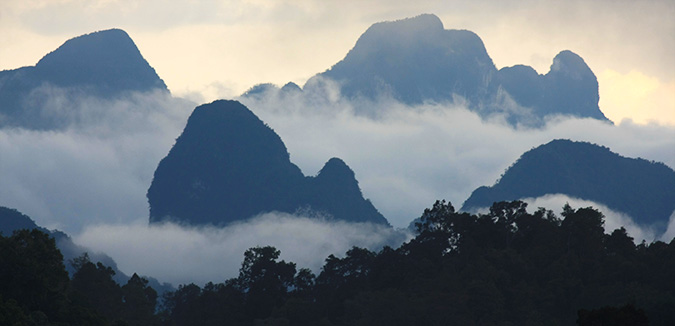
© S. Seipke
Explore the Bird Riches of Kaeng Krachan
Thailand also offers the potential for a myriad of spectacular and fascinating birds and our third tour location, Kaeng Krachen National Park, with a known bird list of 528 species promises the chance of an incredible variety of wildlife too including Asian Elephant, a variety of primates and even the possibility of leopards or Sun Bear.
The Northern Thailand Extension
This new exciting Tour Extension to Northern Thailand will give us chance of exploring the bird-rich far north reaches of the country. Here we will target species such as Mrs. Hume's Pheasant, Pied Harrier, Rufous-winged Buzzard, White-rumped Falcon, Collared Falconet, Amur Falcon, Blossom-headed Parakeet, Black-eared Shrike-babbler, Maroon Oriole, Yellow-cheeked Tit, Pygmy Cupwing, Black-throated Bushtit, Rufous-winged Fulvetta, Silver-eared Laughingthrush, Himalayan Cutia, Bar-throated Minla, Scarlet-faced Liocichla, Spectacled Barwing, Silver-eared Mesia, Rufous-backed Sibia, Spot-breasted Parrotbill, Giant Nuthatch, Dark-sided Thrush, Rufous-bellied Niltava, Daurian Redstart, White-capped Redstart, Mrs. Gould's Sunbird, Green-tailed Sunbird, Red Avadavat, Spot-winged Grosbeak, and many more...
Make a difference!

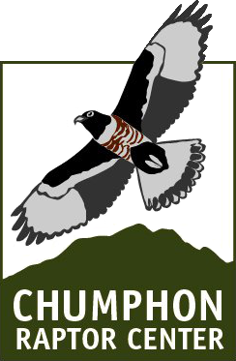 Raptours®, L.L.C. will make a financial contribution to Hawk Mountain Sanctuary for every member that signs up for this tour. Join us on this tour and make a lasting contribution to raptor conservation.
Raptours®, L.L.C. will make a financial contribution to Hawk Mountain Sanctuary for every member that signs up for this tour. Join us on this tour and make a lasting contribution to raptor conservation.
Raptours®, L.L.C. is also a sponsor of the Chumphon Raptor Center. Join us on this tour and learn about raptor identification and migration ecology while helping fund raptor conservation worldwide.
Main Tour
Day-by-Day Itinerary
Day 1
21 October
Arrival at Suvarnabhumi International Airport (IATA Code BKK), meet with Raptours' guides, and transfer to airport hotel. In the afternoon we will have optional birding either at a local park or at some wetlands adjacent to our hotel, which might yield species like Spot-billed Pelican, Painted Stork and Pheasant-tailed Jacana. Welcome briefing in the evening. Lunch, if arriving in the morning, dinner and overnight at hotel Aranta.
Day 2
22 October
Breakfast and check-out. Transfer to the airport to catch our 9:00 AM flight (Thai Smile, bag limits) to Surat Thani (IATA code URT). Transfer to the spectacular Khao Sok National Park, where limestone mountains and ancient rainforests meet breathtaking lakes. This striking scenery might be recognizable to some as the stunning location for the movie Avatar. We will take a boat ride to check in to our floating hotel, home for the next two nights. Post lunch we will enjoy exploring this wildlife packed National Park by traditional Thai long-tailed boat, targeting raptors including White-bellied Sea Eagle, Lesser Fish Eagle, Oriental Hobby, and Osprey. Other birds to keep an eye out for over the lake include several species of Hornbill including Great and Bushy-crested. This park is home to perhaps the world's rarest stork: Storm's stork, although recent encounters are limited to a few camera trap sightings. Night on floating hotel.
Day 3
23 October
7:00 AM, breakfast. At 8:00 AM we will head out again by long-tailed boat. Birding by boat, we will target raptors including Lesser and Gray‑headed Fish Eagles, White‑bellied Sea Eagle, Brahminy Kite, Crested Honey Buzzard and if we are lucky Black‑thighed Falconet too. Though rare, Blyth's and Wallace's Hawk-Eagles occur here as well. Lunch, either at our floating hotel or at another floating restaurant in the park. In the afternoon another boat ride will take us for a sunset visit to a roost location for Bat Hawks, where we will watch them head out on their evening hunt. We will also keep our eyes peeled for spectacular kingfishers and our ears open at dusk for Buffy Fish Owl (among others). With luck Asian elephant can also be seen in the reservoir. 7:30 PM, dinner. Night in floating hotel.
Day 4
24 October
6:30 AM, breakfast, 7:30 AM, checkout. 7:45-8:45 AM, boat ride back to pier. We will spend our day birding our way north to Chumphon. Stops on-route will allow us to enjoy a variety of species from colorful barbets, sunbirds and parrots to weird and wonderful cuckoos and drongos. Of course we will always have our eyes to the skies for soaring raptors including Crested Serpent Eagle and Booted Eagle as well as rarities including Rufous-bellied Eagle and Black Eagle. Check-in. Dinner. Night in the Nana Beach Hotel.
Day 5-8
25-28 October
For the next four days our daily routine will be similar. We will start at 7:00 AM with breakfast at our hotel and then a ten-minute drive to the Chumphon Raptor Center at 8:00am. There is an uphill hike on paved trails to some of the lookouts here that can be moderately demanding, however all the raptor species at Khao Dinsor can be seen from the Center's parking lot too. Guides will decide where to watch from based on the flight and the mobility of the group. Picnic lunch or return to our hotel for a lunch depending on flight (and weather) circumstances. Between 3:00 and 4:00 PM we will return to the hotel.
Beyond this you have many options: you can choose to relax at the hotel swimming pool, get a Thai massage, take a dip in the sea, or enjoy a drink at the hotel's beachside bar. Optional short local trips to see resident raptors and other birds will also be a part of our daily routine. These might include a trip to Phanang Tak Bay for shorebirds, including Malaysian and White-faced Plovers or up into the surrounding hills at Kromluang Chumphon Wildlife Sanctuary for broadbills, woodpeckers, flowerpeckers and more. We will also take one day to visit an alternative migration site: Radar Hill, depending on flight conditions.
Dinner will be at our hotel or a short walk to a local restaurant at 6:30 pm. Night in the Nana Beach Hotel.
The raptor flight at in late October at Khao Dinsor is dominated, in approximate order of abundance, by Black Baza, Chinese Sparrowhawk, Gray‑faced Buzzard, Oriental Honey Buzzard, Shikra, Japanese Sparrowhawk. Less abundant migrants include Eastern, and Pied Harriers, Crested Serpent Eagle, Besra, Booted Eagle, and Steppe, and Japanese Buzzards. At all times, resident raptors such as Brahminy Kite, Crested Goshawk, and White‑bellied Sea Eagle may pop up at the lookouts. Rarities regularly occurring every season at Khao Dinsor include Rufous-winged Buzzard, Short‑toed Snake Eagle, Black Eagle, Eurasian Sparrowhawk, and Greater Spotted Eagle. The raptors will be joined in the skies by Asian Openbill (storks), a myriad of swifts and a couple of different bee-eaters as well as Indochinese Rollers and Oriental Pratincoles.
Day 9
29 October
7:00 AM, breakfast at hotel restaurant. 8:00 AM, check‑out. 8:15-12:30 AM, drive to Laem Phak Bia. Lunch. Boat trip to target Chinese Egret, and other non-raptorial targets. Then to Baan Maka Nature Lodge on the edge of the incredible Kaeng Krachan National Park. Post checking in we can explore the hotel's wonderful gardens for birds. After dinner will offer optional owling: Brown Wood-owl, Brown Boobook, Collared Owlet.
Day 10
30 October
7:00 AM, breakfast at hotel restaurant. 8:00 AM, drive to Pak Thale to target two very special birds: Spoon-billed Sandpiper and Nordmann's Greenshank: though both are rare globally and locally this is the time of year they start to appear at Pak Thale and we will devote time to seeking out these rare and threatened shorebirds. Lunch. In the afternoon we’ll explore the vast rice fields of Petchaburi to target a wide variety of raptors and other birds. At sunset we will visit a local bat cave, here several accipiter species, Gray-faced Buzzard and Peregrine Falcons come to hunt the millions of bats as they leave their roosts during an extraordinary 15-minute window! 8:00 PM, dinner at hotel. Overnight Baan Maka Nature Lodge. Optional owling.
Day 11
31 October
7:00 AM, breakfast. 8:00 AM on, all day in the lower reaches of Kaeng Krachan National Park. This park is a jewel of central Thailand and hosts a multitude of birds and other amazing wildlife including leopards! We will explore the park extensively for the next few days looking for Jerdon's Baza, Oriental Honey Buzzards and Collared Falconet. As well as the birds-of-prey we will search out non-raptor highlights like Banded Kingfisher, Blue and Eared Pitta, Grey Peacock-Pheasant, Silver-breasted, Banded and Dusky Broadbill, Great Slaty Woodpecker, Red-headed and Orange-breasted Trogon as well as the bizarre Ratchet-tailed Treepie. Either picnic lunch or back at the hotel. Overnight Baan Maka Nature Lodge. Optional owling.
Day 12
1 November
Breakfast and head again for Kaeng Krachan. We will spend the morning in the park looking for a host of birds including Collared Falconet, and birds we missed the day before. Lunch at the lodge. In the afternoon we’ll visit waterholes hoping to see some wild Red Junglefowl (progenitor of your humble chicken) and perhaps even a couple of different pheasants, among other birds. We’ll bird at established blinds here where the birds often come quite close and often afford great photo ops! Dinner and overnight at the Baan Maka.
Day 13
2 November
Early breakfast at the hotel, and then head to Kaeng Krachan NP. Today we'll explore the higher reaches of the park to target a different array of birds including Mountain Hawk-Eagle as well as the spectacular non-raptors like Orange-breasted Trogon, Red-bearded Bee-eater and Banded and Black-and-red Broadbill. Lunch in the park. In the afternoon we’ll head back to Bangkok stopping along the way for bird sightings. Check-in at the Hotel Aranta. Dinner and overnight at the hotel.
Day 14
3 November
Catch flights back home… or, continue on the Nothern Thailand Extension!
Northern Thailand Extension
Day-by-day Itinerary
Day 1
3 November
Transfer to Chiang Mai International Airport (IATA Code CNX), In the afternoon we will have some relaxed birding at the Doi Lo paddies where are variety of shorebirds, waders and raptors can be found including desirable ones like Pied Harrier. This is also a spot where we might also hope to encounter the critically endangered, Yellow-breasted Bunting or the stunning Red Avadavat. Night on the edge of Doi Inthanon National Park.
Day 2
4 November
We will spend the next couple of days exploring Doi Inthanon National Park. Nicknamed the Roof of Thailand, the park boasts the highest peak in Thailand, spectacular waterfalls, and cooler temperatures year-round. Avian highlights here include a host of delightful passerine species including jaunty Yellow-cheeked Tit, adorable Pygmy Cupwing and spectacular Silver-eared Laughingthrush. Raptors here include the range limited Rufous-winged Buzzard, a small open country raptor with piercing pale eyes and the rare and threatened White-rumped Falcon which is to be looked for but perhaps not expected. Overnight Doi Inthanon National Park.
Day 3
5 November
After breakfast we will head out again to Doi Inthanon National Park to spend the morning exploring more of this beautiful and expansive national park. One of our targets on the day will be Mrs. Gould’s Sunbird, a particularly spectacular sunbird in a family that hosts many remarkable species. The species is named for the natural history illustrator Elizabeth Gould, whose work was included everything from the Birds of the Himalaya Mountains to illustrating the birds in Darwin’s The Zoology of the Voyage of H.M.S. Beagle. Other spectacular targets on the day include Silver-eared Mesia, Maroon Oriole and Rufous-backed Sibia. A raptor we will seek out here is the diminutive Collared Falconet, a sparrow sized bird that terrorizes butterflies and moths for the most part. In the afternoon we will wind out way north to the town of Fang in northern Chiang Mai. Overnight Fang – our base for the next few days.
Day 4
6 November
This day will see us exploring Doi Pha Hom Pok National Park. Right on the border with Myanmar, this mountainous National Park boasts rare flora and fauna and amazing mineral hot springs. Bird highlights include rare species like Hume’s Pheasant as well as a couple of different partridge species: Rufous-throated and Mountain Bamboo. A raptor target here will be Amur Falcon, as they make their way south from breeding grounds in Mongolia and North Korea to their wintering grounds in southern Africa – a mind-boggling migration that includes a multi-day non-stop flight across the Arabian Sea. Other highlights of the day might include Daurian Redstart and Giant Nuthatch. Overnight Fang
Day 5
7 November
Another day exploring the wondrous sights of Doi Pha Hom National Park. This day will see us birding our way east along the border with Myanmar. As well as the dramatic scenery we will also be seeking out some desirable passerines including the stunning Scarlet-faced Liocichla as well as Spectacled Barwing, Rufous-winged Fulvetta, Himalayan Cutia and Spot-breasted Parrotbill. The park also boasts a host of brightly colored and sometimes highly localized butterfly species which we will also enjoy on our adventure. Overnight Fang.
Day 6
8 November
This day will see us exploring the paddy fields around Fang and Thaton. This will give us another chance to hone our skills with Eurasian shorebirds and to look for a variety of herons and egrets, with the rare Intermediate Egret a possibility. Highlight of any songbirds might include the common but attractive Siberian Rubythroat as well as four species of wagtails and four species of pipits. Raptor targets here might include Black-winged Kite, a close relative of our White-tailed Kite but with a distinctively short tailed appearance. Overnight Fang
Day 7
9 November
We will start our day birding around Fang Hot springs. Targets here will include Spot-winged Grosbeak, a notable species right at the southern edge of its range. We will also hope to encounter the localized and striking “White-faced” Eurasian Jay and of course will keep our eyes to the skies for various swifts and swallows as well as raptors that might include Mountain Hawk-Eagle or, if lucky, Rufous-bellied Eagle.
We will end the northern portion of our extension with an evening stop at the famed Pied Harrier roost at Wiang Nong Lom. The roost here can boast as many as fifty of these remarkable raptors as well as Eastern Marsh Harriers and the occasional Hen Harrier. The perfect raptor fueled end to this Raptours adventure!
Night Chiang Rai.
Day 8
10 November
Transfer from Chiang Rai to Bangkok. To wrap up the tour we will have the opportunity to head out for the afternoon to Khok Kham on the outskirts of Bangkok for another chance at Spoon-billed Sandpiper. This gives us another shot at this highly desirable species if we don’t have it from the main tour. There’s always lots more to see at a site that has recorded over 30 different species of shorebirds in previous Novembers!
common name
- Osprey
- Oriental Honey Buzzard
- Crested Honey Buzzard
- Black Baza
- Jerdon’s Baza
- Crested Serpent Eagle
- Black Kite
- Brahminy Kite
- Chinese Sparrowhawk
- Japanese Sparrowhawk
- Shikra
- Besra
- Eurasian Sparrowhawk
- Crested Goshawk
- Eastern Marsh Harrier
- Pied Harrier
- White-bellied Sea Eagle
- Lesser Fish Eagle
- Gray-headed Fish Eagle
- Short-toed Snake Eagle
- Bat Hawk
- Changeable Hawk-Eagle
- Mountain Hawk-Eagle
- Blyth’s Hawk-Eagle
- Rufous-bellied Hawk-Eagle
- Black Eagle
- Greater Spotted Eagle
- Booted Eagle
- Rufous-winged Buzzard
- Gray-faced Buzzard
- Eastern Buzzard
- Steppe Buzzard
- Black-thighed Falconet
- Collared Falconet
- White-rumped Falcon
- Common Kestrel
- Oriental Hobby
- Peregrine Falcon
Latin Name
- Pandion haliaetus
- Pernis ptilorhynchus orientalis
- Pernis ptilorhynchus torquatus
- Aviceda leuphotes
- Aviceda jerdoni
- Spilornis cheela
- Milvus migrans
- Haliastur indus
- Tachyspiza soloensis
- Tachyspiza gularis
- Tachyspiza badia
- Tachyspiza virgata
- Accipiter nisus
- Lophospiza trivirgata
- Circus spilonotus
- Circus melanoleucos
- Haliaeetus leucogaster
- Ichthyophaga humilis
- Ichthyophaga ichthyaetus
- Circaetus gallicus
- Macheiramphus alcinus
- Nisaetus cirrhatus
- Nisaetus nipalensis
- Nisaetus alboniger
- Lophotriorchis kienerii
- Ictinaetus malaiensis
- Clanga clanga
- Hieraaetus pennatus
- Butastur liventer
- Butastur indicus
- Buteo japonicus
- Buteo buteo vulpinus
- Microhierax fringillarius
- Microhierax caerulescens
- Polihierax insignis
- Falco tinnunculus
- Falco severus
- Falco peregrinus
Suggested Field Guides
Kasorndorkbua, C., C. Chinuparawat, and C. Nualsri.. 2008. A Photographic Guide to the Raptors of Thailand. Amarin Printing and Publishing Co., Bangkok, Thailand. (Thai, with English common names).
Robson, C. 2002. Birds of Thailand. Princeton Field Guides, Princeton, New Jersey.
Need to Know
Tour Dates & Availability
Main Tour 21 Oct – 3 Nov 2024 | 14 Places Available
Tour Extension 3 – 10 Nov 2024 | 14 Places Available
Group Size Limits
3-14 Participants
Up to 7 participants in a sinlge group. Split in two groups (for ground transportation and boat rides) if more than 7 join the tour. Guide-to-participant ratio will be 1:4 or better. Meals, flights, and other group activities, together. Having several guides will provide us more flexibility to accomodate individual needs/demands.
All Inclusive Tour Price
Early Bird tour price is US$5,900 and includes hotels (double occupancy), one domestic flight, all meals with non-alcoholic beverages, bottled water, ground transportation, boat rides, NP entry fees, and tour leader, local guide, and driver fees. After 1 May 2024 tour price is $6,490.
Early Bird tour extension price is US$3,490 and includes hotels (double occupancy), two domestic flights, all meals with non-alcoholic beverages, bottled water, ground transportation, boat rides, NP entry fees, and tour leader, local leader, and driver fees. After 1 May 2024 tour extension price is US$3,850.
Flights to and from Thailand, entrance visas (if applicable to you), extra nights, alcoholic beverages, items of personal nature, tips, and insurance of any kind are not included.
A non-refundable Registration Fee of US$300 will be requested at the time of booking. This fee counts against the total tour price.
Main Tour Single supplement is US$600.
Tour Extension Single supplement is US$275.
Roommates will be assigned to those participants willing to share a room. If a roommate is not available, you will be required to pay the single supplement.
Booking & Payment
Use the ‘Book This Tour’ button above to fill out the online booking form at your earliest convenience. Participants will be accepted on a first come, first served basis. This online form is contractual.
Once your application information is reviewed, and your application approved, the non-refundable Registration Fee will be requested (credit cards via PayPal only).
Once we have reached the minimum number of participants (3) the remaining balance, plus any applicable Single Supplement fees will be requested. Full payment is due by 1 July 2024.
Wire transfer is the preferred method of payment. Credit card payments are also accepted but a $200 handling fee per participant applies.
Trip Cancellations
All cancellation requests must be made in writing to Raptours, L.L.C.
Cancellations requested before 1 August 2024 will be subject to a full refund minus the non-refundable US$300 Registration Fee.
No refunds will be made for cancelations requested on 1 August 2024 or after.
Raptours, L.L.C. reserves the right to cancel the tour at any time with full refund (including the Registration Fee) to participants.
Travel cancellation insurance is recommended.
Country Entry Requirements
Passport holders from the U.S., New Zealand, Australia, and most of Europe don’t need a visa
Passport holders from 48 countries including the U.S., New Zealand, Australia, and most of Europe do not need a visa to enter Thailand and will be permitted a stay of 30 days if visiting the country for tourism.
See here to find out whether you need a visa to enter Thailand, and how to get it if you need one.
Difficulty
Easy to Moderate
At Khao Dinsor great looks of both migratory and local raptors are possible from the very Visitor Center’s parking lot. Chairs are available to visitors here. There are other overlooks up the hill. On sunny days, or when the wind blows from the east, and especially for photographers, it might make sense to hike up the hill to reach a higher lookout. Depending on where you choose to watch the birds from at Khao Dinsor you may need to hike up to 60 mins. Again, those staying at the Visitor Center will enjoy numerous sightings of raptors regardless of time and wind direction.
Hawkwatching takes place from a flat hilltop at Radar Hill. We drive up there so no hiking is involved. There are benches and sometimes chairs too.
At Khao Sok we look for, and watch raptors from long‑tailed boats. These boats have padded benches but not actual seats. Boat rides usually last between 2‑3 hours and no pit stops are possible during these periods, except at the Bat Hawk place, where we can disembark and enjoy a nice cup of tea.
Comfort
Accommodations range from good to excellent. A few long drives involved. Birding excursions from long-tailed boats will last 2-3 hs during which no pit stops will be available.
Weather & Clothing
Humid and hot. Showers expected | Bring sunglasses, sunscreen, a hat, insect repellent, and a folding umbrella.
Average temperatures in the Khao Dinsor area range from lows at 75 °F / 24 °C to highs around 90 °F / 31 °C. Occasional showers can be expected, especially towards the end of October.
Make sure you pack your raincoat or folding umbrella, and a light jacket. Hat and sunglasses will be of use as well. Sunscreen and insect repellent (DEET) is recommended.
Health
Some travel vaccines and malaria prophylaxis are advisable.
Visit your health care provider at least 6 weeks before the tour to allow time for your vaccines to take effect and to start taking medicine to prevent malaria if you need it.
Travel medical insurance is recommended.
For more information visit CDC’s website 6 weeks before departure.
Tour Start & End Points
Tour starts and ends in Suvarnabhumi International Airport (IATA Code BKK), Bangkok.
Tour Leader
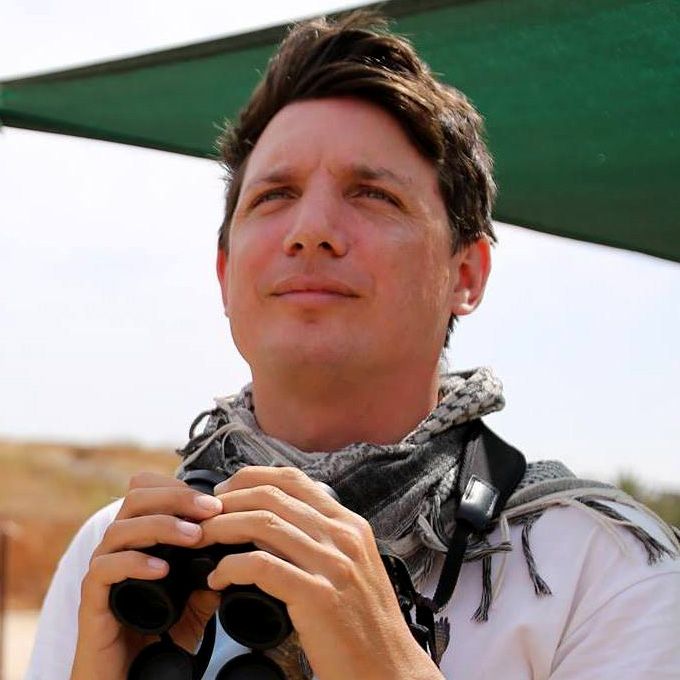
Thai Guide
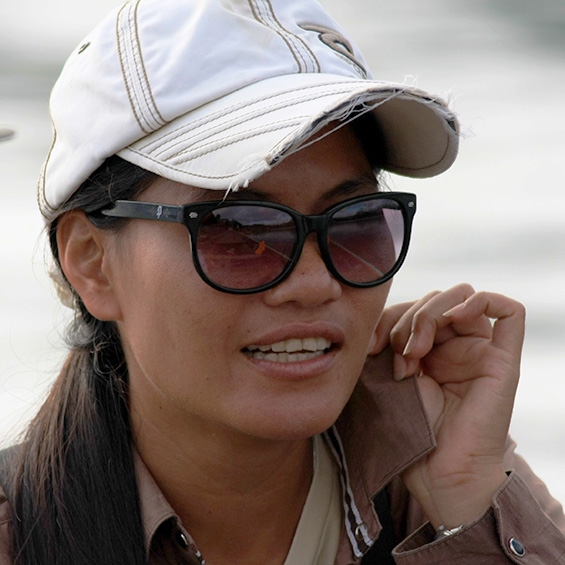
Tour Showcase
Terms
Raptours, L.L.C. reserves the right to alter this itinerary as necessary, or to cancel the tour prior to departure, with full refund to participants.
Raptours, L.L.C. or its agents may decline to accept or retain any person as a member of this tour at any time.
No smoking will be permitted while with the group, either when indoors or in the field.
Travel medical insurance is strongly recommended.
All passengers will be required to sign a hard copy of the Release of Liability and Assumption of Risk form upon meeting with the tour leader in Bangkok.
No participants will be allowed in the group without a signed copy of the Release of Liability and Assumption of Risk form.
Release of Liability and Assumption of Risk Form
(including Terms)
![]()


